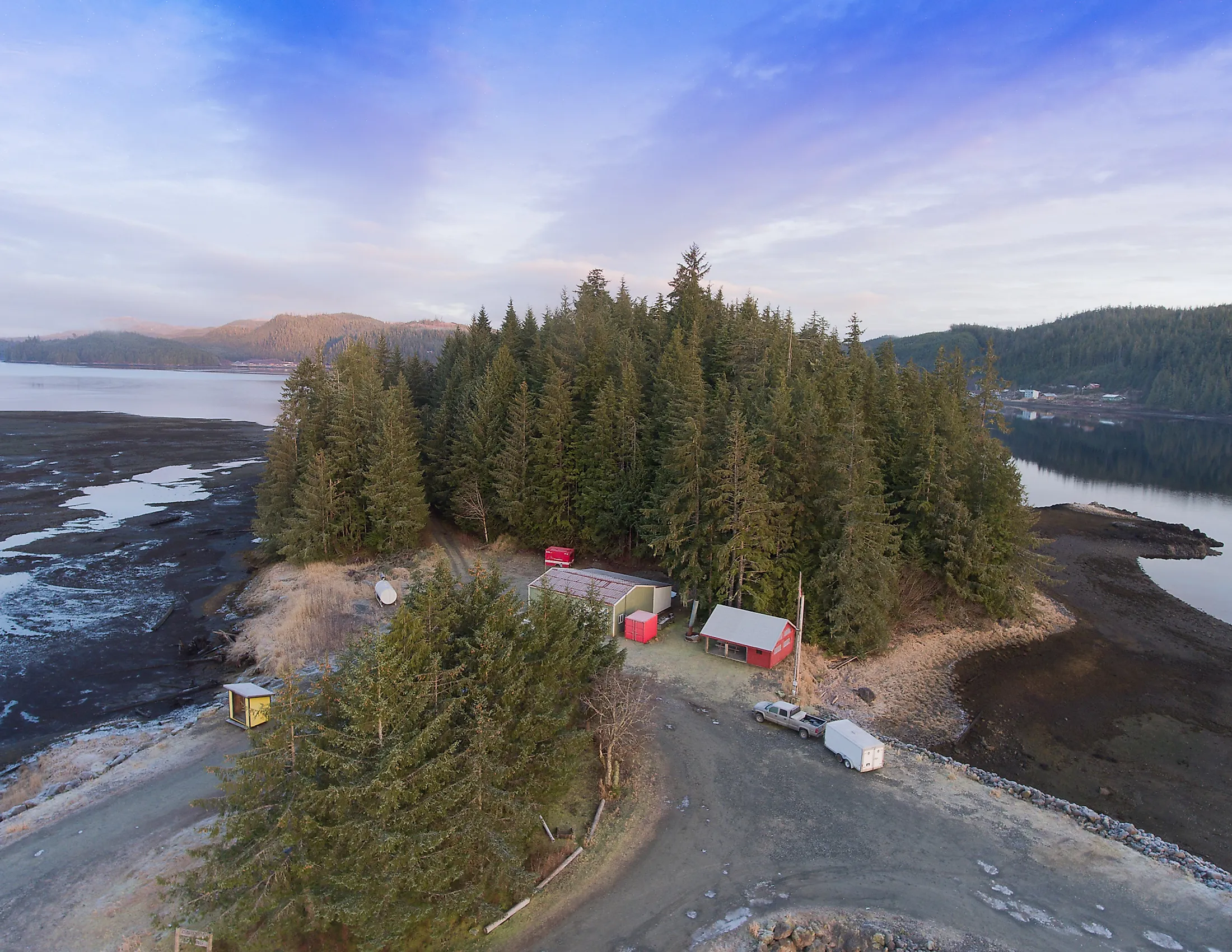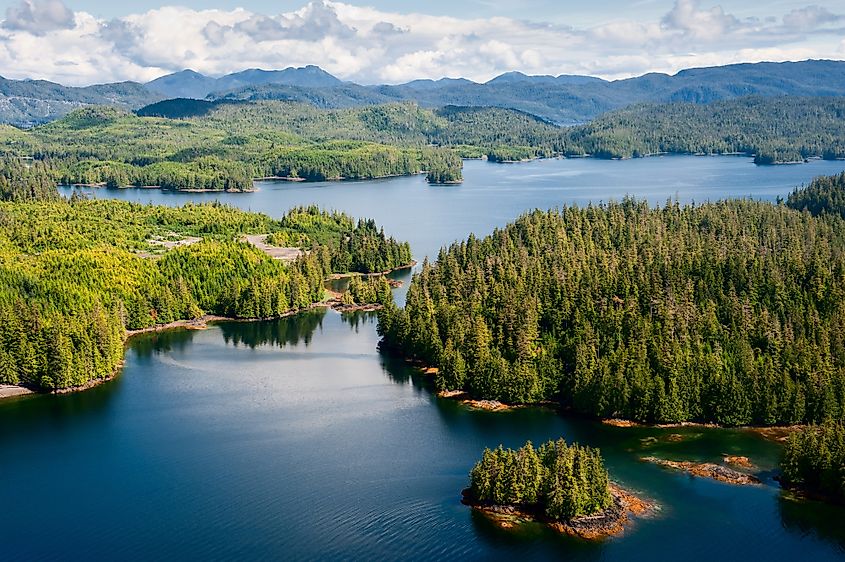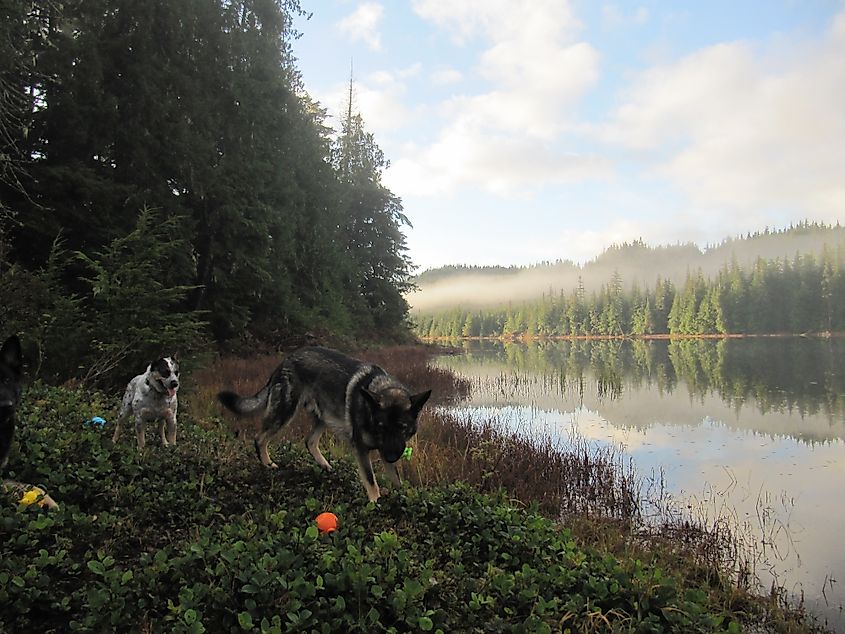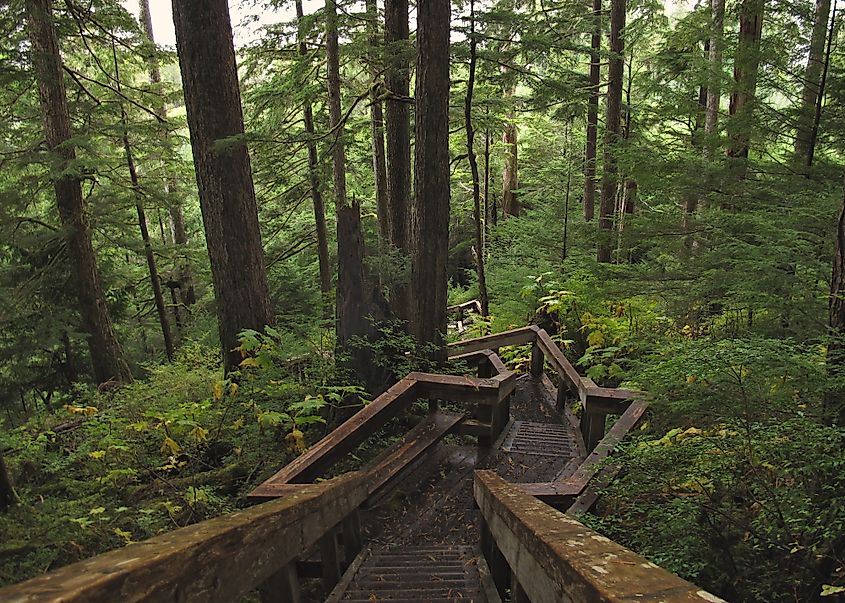
Prince of Wales Island, Alaska
Prince of Wales Island is the fourth-largest island in the United States and one of the islands of the Alexander Archipelago in the Alaska Panhandle. Located just a three-hour ferry ride from Ketchikan, the island stretches across 2,230 square miles, making it a flawless destination for adventurous tourists who come to Alaska to paddle, backpack, or catch a trophy salmon or halibut.
Geography And Climate Of Prince Of Wales Island

Prince of Wales Island includes the main island and hundreds of adjacent islands - a total of more than 2,600 square miles with 990 miles of coastline, which has numerous bays, coves, inlets, and points. The island is situated 600 miles north of Seattle, Washington, with a landscape categorized by steep, forested mountains and deep valleys, rivers, lakes, and bays that were engraved by glacial ice, which used to cover the whole area. Most of the islands' mountains are 2,000 to 3,000 feet high, whereas most of the island is covered by The Tongass National Forest.
The Karta River Wilderness and the South Prince of Wales Wilderness contain many of the island's wildlife, which is not found anywhere else, such as the Prince of Wales flying squirrel.
The Prince of Wales Island has a maritime oceanic climate, with cool, humid and mostly cloudy summers and long, very cold, and overcast winters. With abundant rainfall throughout the year, temperatures in Prince of Wales typically range from -0 °C to 18 °C, and are rarely below -6 °C or above 22 °C. July and August are generally the driest months and are considered the most attractive months for warm-weather activities for tourists, and November is usually the wettest.
Brief History Of Prince Of Wales Island
The area was explored in 1775 by the Spanish explorer Don Juan Francisco Bodega y Quadr after being inhabited originally by its natives, the indigenous Kaigani Haida people. The British followed the Spanish explorers, where Captain James Cook pursued the Northwest Passage in 1778. Later on, in 1793, George Vancouver named all the islands of the southern Alexander Archipelago as "Prince of Wales Archipelago," which referred to George, Prince of Wales; to be called later on in 1825 as "Prince of Wales Island." By the late 19th century, the extraction of gold, copper, and other metals started as Europeans and Americans arrived in the area to occupy its natural resources. Uranium was mined at Bokan Mountain in the 1950s and 1970s.
Economy And Population Prince Of Wales Island
Prince of Wales Island's economy relies on fish, timber, tourism, and minerals. While resource-based factors are relatively steady, the visitor industry is taking the largest role due to the easy access to the island and ease of travel on it. The Inter-Island ferry sails daily between Hollis and Ketchikan to provide a link for more than 44,000 people and 9,800 vehicles. The island's exclusive road system, which spreads across more than 1,500 miles, connects communities, making many natural resource bases accessible.
Moreover, Prince of Wales Island's median annual household income is estimated at around $52,379. And like the rest of Alaska, which is the most tax-friendly state in the country, the island has no sales tax and no state income tax.
The island's population is estimated to be around 6,407 residents, of which 98.5% of them are citizens. 3.14% of the residents were born outside of the country, mostly coming from the Philippines.
Top Attractions In The Prince Of Wales Island

Klawock Totem Park: Klawock's 21 totems are one of the largest collections in Alaska with their scenic, dramatic location on a hill overlooking the town's harbor. The park displays both original and replicas of totems from the former village of Tukekan.
The Prince of Wales Hatchery: Established in 1897, the hatchery is today the second-oldest hatchery in Alaska. The facility was built in 1976 and raises coho, king, and sockeye salmon, with many released into the neighboring Klawock River. There is an aquarium and gift shop inside the Matt Turner Visitor Center, where fresh salmon is often for sale. Outside, black bears are usually spotted eating across the river; Moreover, the hatchery offers its visitors free guided walking tours of the facility during the summer.
The Island Caves: The island contains an extensive cave system with more than 850 grottos and caves. The most attractive cave to visit is El Capitan Cave, located in northwest Thorne Bay. "El Cap," as the locals call it, can be easily observed even if you've never worn a headlamp. Also, visitors will have the chance to see the hollows made by otters and bears to spend the winter. Also, near El Capitan Cave on the road to Whale Pass is Cavern Lake Cave. The spot contains an observation deck that allows visitors to look into the cave's mouth at the flowing stream.

Moreover, the island features a list of parks and beaches along its coast, with bike-friendly hills and streams that host lots of canoeing, kayaking activities, rustic campgrounds, fishing lodges, and plenty of hiking trails.
Whether you wish to go cruising along the scenic byways, travel off-road to explore the wilds, or enjoy the beauty of lakes and rivers, the Prince of Wales Island has it all to offer. Its rainforest ecosystem in Southeast Alaska is also home to a variety of land animals, including black bears, Sitka black-tailed deer, gray wolves, mink, beavers, and river otters, giving its visitors the chance to capture nature at its finest.











